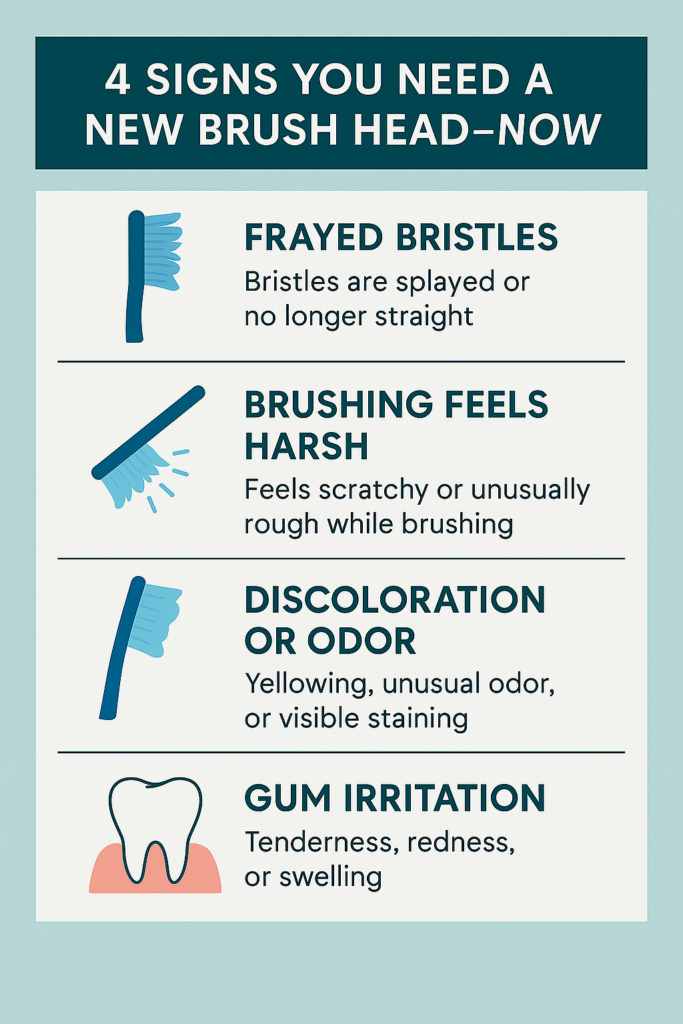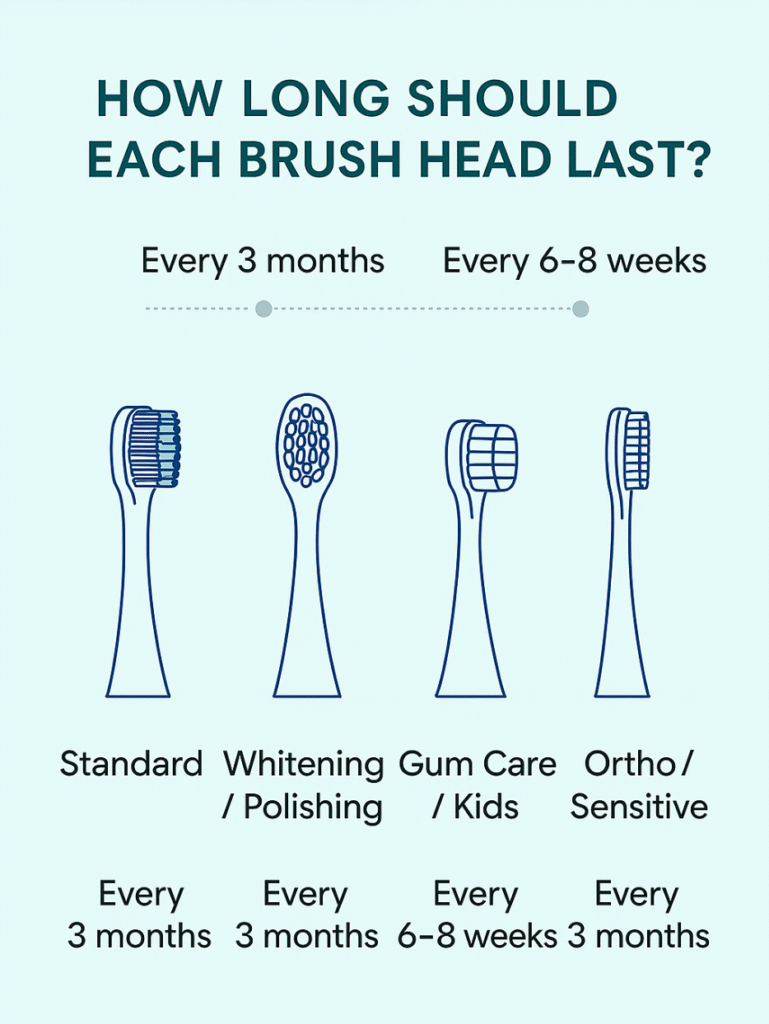You brush twice a day. You floss (most days). You even upgraded to an electric toothbrush. But if you’re still using the same brush head from months ago, your “healthy habit” might be falling short.
Many people wait until their bristles look obviously worn, or until brushing feels less effective. But by that point, your toothbrush head may already be harboring bacteria, scratching your gums, and cleaning poorly.
It’s not just about replacing something old. It’s about keeping your oral care effective and safe—every single day.
And if you think using a smart, high-end brush means you can skip replacements? Think again.
Even the most advanced smart toothbrush can’t compensate for worn-out bristles—and in fact, sonic vibration may wear them down faster.
In this guide, you’ll learn:
A toothbrush head looks like a small thing. But when used twice a day, 30+ strokes per second, it becomes the front line of your entire oral care system.
Research shows worn bristles lose up to 40% of their cleaning effectiveness.
The tips become blunted and can no longer reach between teeth or along the gumline—areas where plaque hides and cavities begin.
Your bathroom is warm, damp, and humid—perfect for microbial growth.
A 2022 study in the Journal of Clinical Dentistry found that toothbrushes used beyond 3 months had significantly higher bacterial counts, especially after illness.
Stiffened or jagged bristles don’t just stop cleaning well—they can also cause microabrasions on the gums or enamel.
This is especially risky for users with sensitive gums, receding gumlines, or kids learning to brush independently.
If it’s been three months, or you spot any of the above signs, it’s time for a new brush head.

The ADA recommends replacing your brush head every 3 months—but that’s just a general guideline.
Several factors could mean you need to swap sooner:
Sonic and high-frequency electric brushes deliver superior cleaning—but their vibration also breaks down soft bristles more quickly.
Even top-tier models like Oclean’s require timely head replacement for peak results.
Want a simple way to stay on schedule? Explore sonic electric toothbrush replacement heads built for durability, compatibility, and long-term comfort.
Bottom line:
Replace every 3 months—or sooner if your brush shows signs of wear. Don’t wait for it to “feel wrong.”
Not all brush heads are built alike—and their lifespan depends on both design and material.
If you’re unsure what you’re using, inspect the bristle design—and watch how quickly they begin to bend or spread.

Definitely not. Cheap refills may look similar—but they often lack in safety, comfort, or durability.
Even within the same brand, different models may use different mounting mechanisms.
Using a mismatched head can lead to loose fit, mid-brush popping off, or vibration issues.
If you’re considering third-party heads, check:
Can’t remember when you last replaced your brush head? You’re not alone.
A subscription model can solve that—delivering compatible heads to your door every 3 months, no reminders needed.
Life’s busy. Remembering a small hygiene task like replacing a brush head is easy to forget—but there are ways to automate it:
If your brush head is worn out, chances are your partner’s or child’s is too. Sync replacements across the family to simplify your routine.
Let’s be honest—replacing plastic brush heads every 3 months adds up. So how do you protect your teeth without harming the planet?
Some oral care brands now offer biodegradable bristles, minimal-plastic cartridges, or mail-in recycling programs (like Terracycle).
If your local recycling doesn’t accept oral care plastic, collect used heads in a container and ship them in batches to recycling programs. Dental offices often partner with these too.
Ironically, using durable, high-quality heads may reduce your environmental impact—since they maintain effectiveness longer and reduce the need for early replacement.
You wouldn’t keep using a sponge long after it’s falling apart.
So why keep brushing with a tool that’s stopped doing its job?
Replacing your toothbrush head on time doesn’t just clean better—it prevents bacteria buildup, reduces gum irritation, and improves every brushing session.
Whether you use a manual brush or a smart electric toothbrush, one truth holds: your brush head has a lifespan. Respect it.
This isn’t about perfection—it’s about making one small habit count.
Because your gums, teeth, and confidence? They’re worth it.